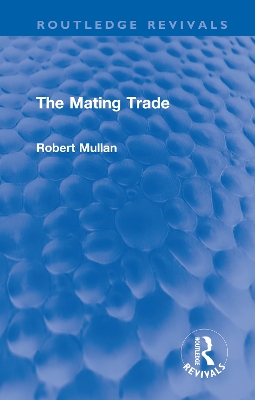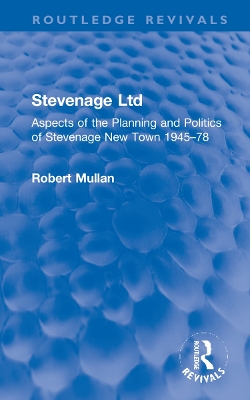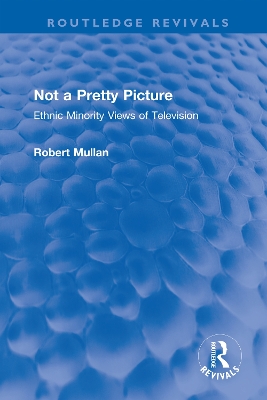Routledge Revivals
4 total works
Are marriages made in heaven? In reality many people need a little help in the arrangement of such matters, whether from Jewish shadkhans (matchmakers), go-betweens, computer or video-dating agencies, marriage bureaux, Asian arranged marriages, gay dating agencies or personal ads. Originally published in 1984, the author’s clear-sighted look at the mating trade takes some of the mystique away from the subject and is the first serious and detailed account of the ‘third party’ in marriage.
Dr Mullan looks at the ‘singles scene’ and the ‘arranged marriage’ historically and cross-culturally, and makes it clear that there is nothing necessarily odd or deviant about the mating trade. It is a business like any other, and as long as people continue to want ‘perfect partners’, marriage, permanent relationships, dates and sex, and while evolving social structures make such demands ever more difficult to meet, the business will thrive. It could even expand and grow, but the author believes that first it will have to clean up its act!
A study of particular aspects of the politics of planning a new town, this book, originally published in 1980, covers events from the inception of Stevenage in 1946 up to 1978. As a case study, the focus is on two expansion schemes, which were intended to extend the designated area of the town, and on the public protest that the two schemes engendered. Emphasis is placed on the structure and action of three groups of people: the ‘urban managers’ – the Stevenage Development Corporation; Stevenage industrialists; and local organisations engaged in protest. The theoretical focus is on the thesis of ‘urban managerialism’: the book examines the constraints placed upon both the structure and action of the Stevenage urban managers over the previous thirty years. In showing how matters work in practice, it directs light on issues of theory which other sociologists of planning, such as Pickvance and Castells, had only discussed in the abstract.
The author argues that the experience of Stevenage illustrates a case of urban policy (particularly in housing and employment) being determined by the interests of industry alone, while at the same time pointing to the interrelationship of Stevenage industry and the town’s Development Corporation. He examines the membership, strategies and aims of the various protest groups involved over the years, and casts considerable doubt on the notion that the groups were ‘for democracy’ and ‘against bureaucracy’. Finally, he concludes, controversially, that in Stevenage’s case, public participation and protest were basically irrelevant to the decision-making processes.
Originally published in 1996, ethnic minorities in the UK made up over 5% of the population yet were hardly represented in the hundreds of hours of terrestrial broadcast television each week. The blatant racism of The Black and White Minstrel Show was over, but more subtle forms of racism were piped into our living rooms in an endless stream of white-dominated programming. ‘Comedies’ and soaps presented non-whites as a sort of joke humanity – stereotypical, simple and amusingly childish. Serious programmes swelled on the negative aspects of ethnicity: race as a problem, cultural clashes and language barriers. Above all – not white equals not normal.
For many years critics of popular television argued that such imbalance was harmful. The lack of positive non-white TV role models for children to identify with was leading to growing alienation and disaffection. Ethnic minorities increasingly defined themselves in opposition to white institutions. They were turning towards separate channels – narrow-casting – provided to meet their own TV needs.
Based on both extensive survey research and interviews with actual viewers, Not a Pretty Picture investigates the whole issue of TV and ethnic minority viewers at the time: their viewing choices, their criticisms, their feeling about the way they are portrayed. The conclusions are damning: for most of Britain’s ethnic minority communities TV was a white medium, predominantly controlled by whites, portraying white culture and denying non-whites a voice. Not a Pretty Picture, however, provides a voice for these views and a valuable insight into the way ethnic minorities see TV. Today it can be read in its historical context, to see how far we have come, as well as what still needs to be done.
Originally published in 1987, this edition in 1996, Sociologists on Sociology is a unique and sometimes controversial account of the development, disputes and the future of sociology as seen through the eyes of eleven of the world’s leading sociologists at the time. Consisting of interviews with – Anthony Giddens, Robert K. Merton, Howard Becker, Peter Townsend, Ralf Dahrendorf, Peter Worsley, Stuart Hall, John Rex, Michael Mann, Laurie Taylor and Ann Oakley – the book explores such crucial issues as the nature of deviance, the scientific status of sociology, the relationship of Marxism and sociology, the contours of race and class, feminism, relevance of ethnomethodology and the procedures of participant observation. The contributions of such figures as Goffman, Mills, Parsons, Weber and Foucault are assessed, and in clear and concise language the contributors discuss their own theoretical interests and empirical work in the field.
Students and practitioners of the social sciences will find the book a fascinating and a uniquely direct insight into the thoughts of sociology’s leading figures and a remarkable cumulative assessment of the state of the discipline itself.



